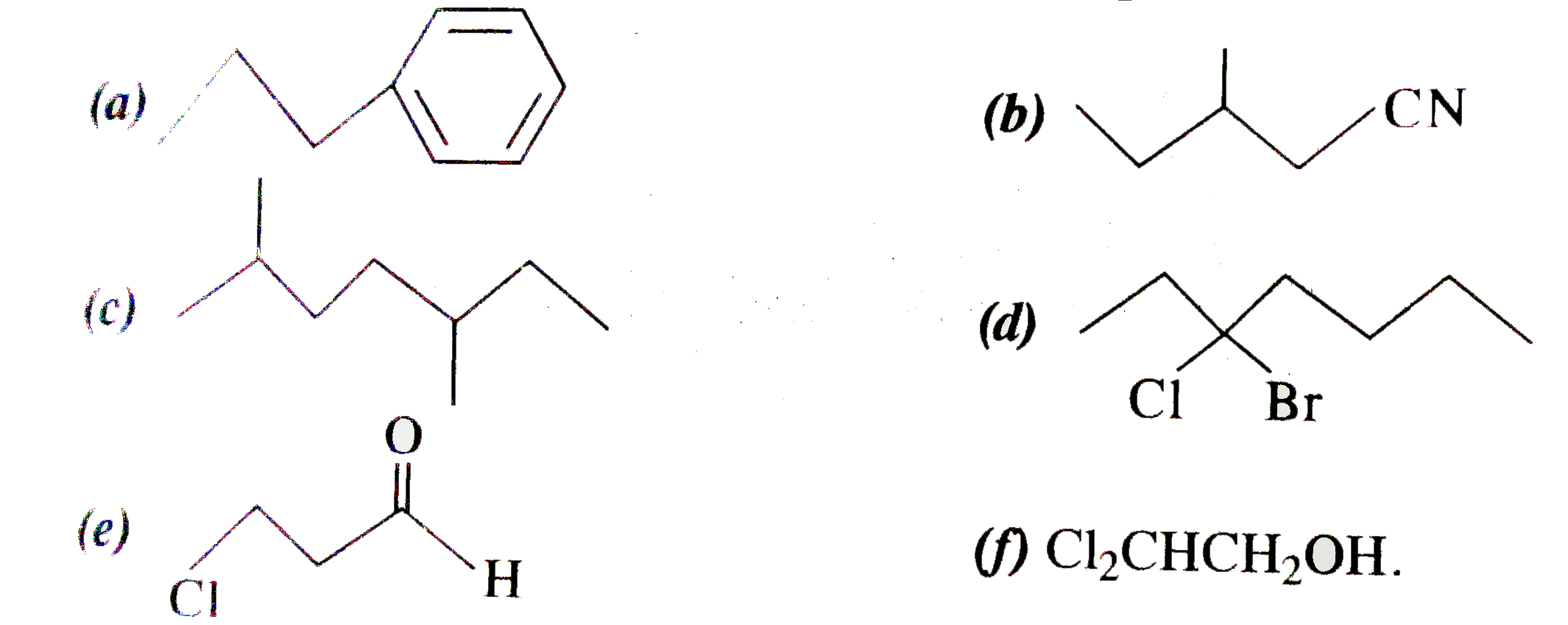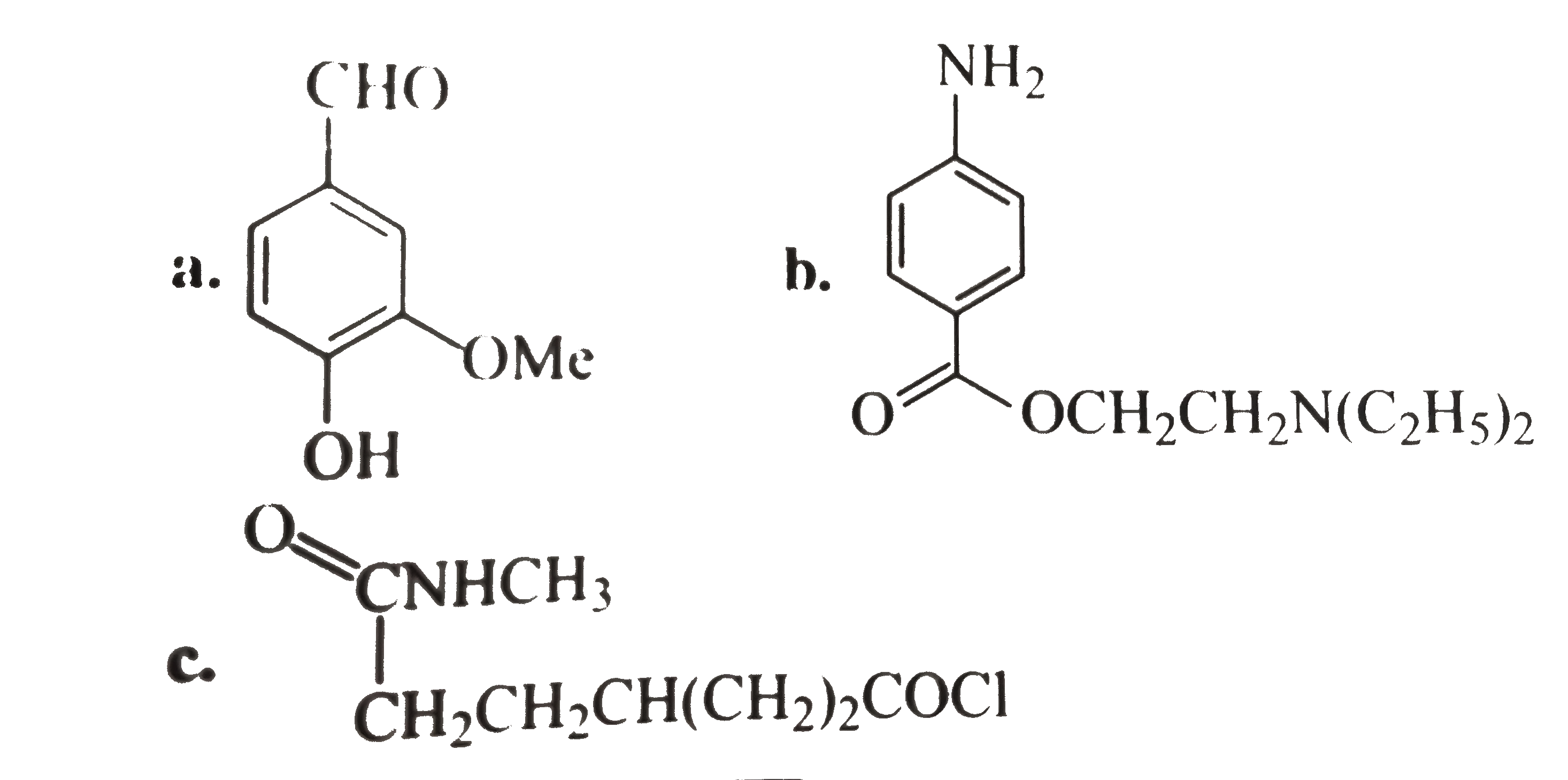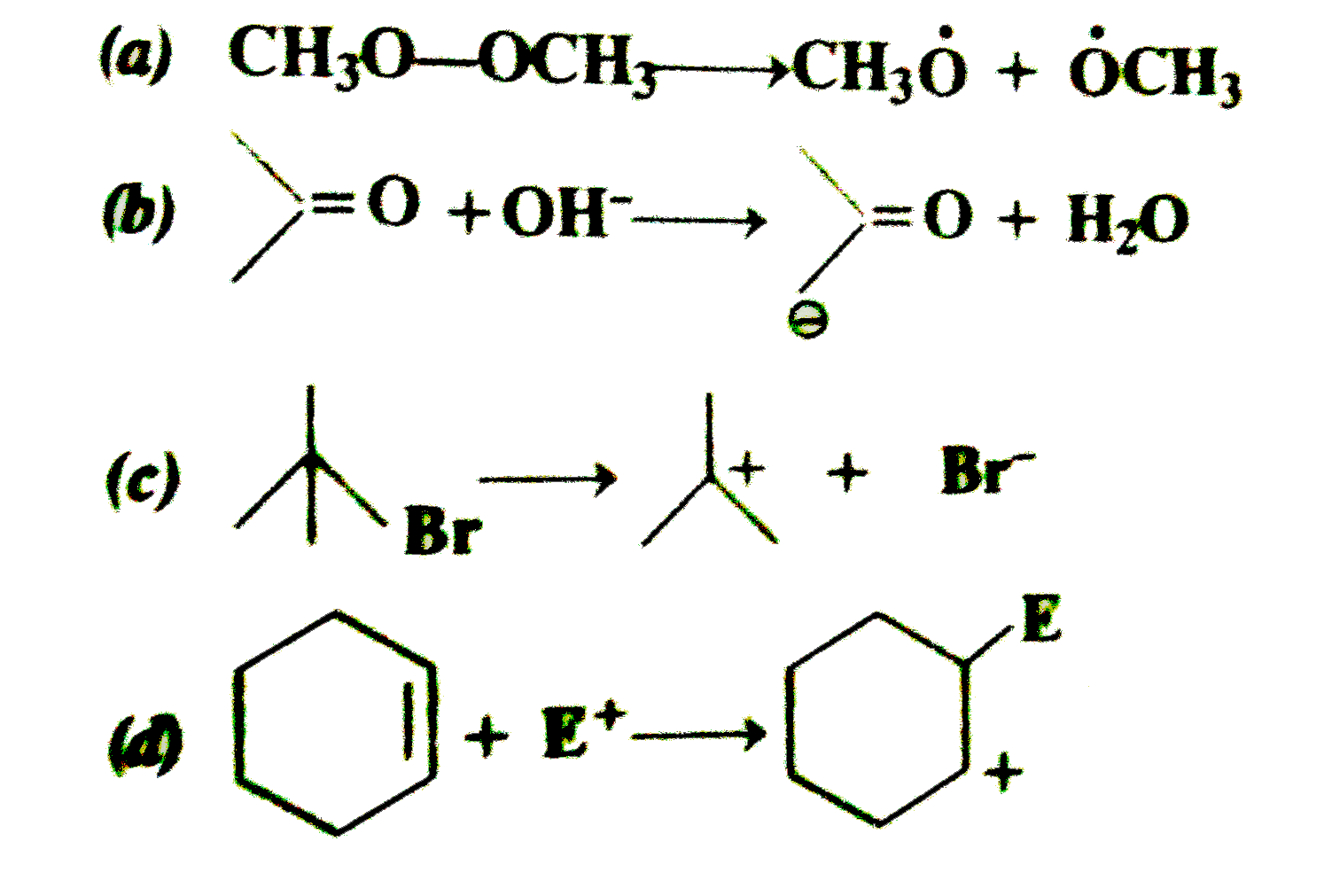Complete Solutions to N.C.E.R.T. of chapter ORGANIC CHEMISTRY - SOME BASIC PRINCIPLES & TECHNIOUES of Class 11 book with complete answers and questions
| Class 11 | CHEMISTRY |
| Chapter | ORGANIC CHEMISTRY - SOME BASIC PRINCIPLES & TECHNIOUES |
| DINESH COMPANION CHEMISTRY | N.C.E.R.T. |
| Number Of Questions | 40 |
| Academic Year | 2023-24 |
What are the hydridised states of carbon atoms in the following compounds ?
(i) `CH_(2)=C=O" "`(ii) `CH_(3)CH=CH_(2)" "`(iii) `(CH_(3))_(2)C=O`
(iv) `CH=CH_(2) CN" "`(v) `C_(6)H_(6)`
View SolutionIndicate sigma `(sigma)` and pi `(pi)` bonds in the following molecules :
(i) `C_(6)H_(6)" "`(ii) `C_(6)H_(12)" "`(iii) `CH_(2)Cl_(2)" "`(iv) `CH_(3)NO_(2)" "`(v) `HCONHCH_(3)" "`(vi) `CH_(2)=C=CH_(2)`
View SolutionWrite bond line formulas for :
(i) Isopropyl alcohol (ii) 2, 3-Dimethylbutanal (iii) Heptan-4-one
View SolutionGive the IUPAC name of the following compounds :

View SolutionWhich of the following represents the correct IUPAC name of the compounds concerned ?
(a) 2, 2-Dimethylpentane or 2-Dimethylpentane
(b) 2, 3-Dimethylpentane or 3, 4-Dimethylpentane
(c) 2, 4, 7-Trimethyloctane or 2, 5, 7-Trimethyloctane.
(d) But-3-yn-1-ol ot But-4-ol-1-yne
View SolutionDraw the formulae for the first five numbers of each homologous series beginning with the following compounds:
a. `H - COOH`
b. `CH_(3) COCH_(3)`
c. `H - CH = CH_(2)`
View SolutionGive the condensed and bond line formulas for the following compounds :
(i) 2, 2, 4-Trimethypentane (ii) 2-Hydroxy-1, 2, 3-propanetricarboxylic acid (iii) Hexanedial
View SolutionIdentify the functional groups in the following compounds.

View SolutionWhich is expected to be more stable : `O_(2)NCH_(2)CH_(2)O^(-)` or `CH_(3)CH_(2)O^(-)` and why ?
View SolutionDraw the resonance structures for the following compounds. Show the electron shift using curved-arrow notation.
(a) `C_(6)H_(5)OH` (b) `C_(6)H_(5)NO_(2)` (c) `CH_(3)CH=CHCHO` (d) `C_(6)H_(5)–CHO` (e) `C_(6)H_(5)-overset(+)CH_(2)` (f) `CH_(3)CH=CHoverset(+)CH_(2)`
View SolutionExplain why alkyl groups act as electron donors when attracted to a `pi-system`.
View SolutionWhat are nucleophiles and electrophiles. Explain with examples.
View SolutionIdentify the reagents shown in bold in the following equations as nucleophiles or electrophiles.
(a) `CH_(3)COOH+OH^(-) rarr CH_(3)COO^(-)+H_(2)O`
(b) `CH_(3)COCH_(3)+NC^(-) rarr CH_(3)C(CN)OHCH_(3)`
(c) `C_(6)H_(6)+CH_(3)overset(+)(C)O rarr C_(6)H_(5)COCH_(3)`
View SolutionClassify the following reactions in one of the reaction type studied in this unit
(i) `CH_(3)CH_(2)Br+SH^(-) rarr CH_(3)CH_(2)SH+Br^(-)`
(ii) `(CH_(3))_(2)C=CH_(2)+HCl rarr (CH_(3))_(2)C(Cl)CH_(3)`
(iii) `(CH_(3))_(3)C CH_(2)OH+HBr rarr (CH_(3))_(2)CBrCH_(2)CH_(3)`
(iv) `CH_(3)CH_(2)Br+HO^(-) rarr CH_(2)=CH_(2)+H_(2)O+Br^(-)`
View SolutionWhat is the relation between the following pairs ?
(a)
(c) `H-overset(+OH)overset(||)(C)-OH` and `H-overset(OH)overset(|)(C)=overset(+)(O)H`
View SolutionClassify each of the following as homolysis as homolysis or heterolysis. Identify the reaction intermediates produced , as free radical, carbocation and carbanion.

View SolutionExplain the terms inductive and electromeric effects. Which electron displacement effect explains the following correct order of the acidity of the carboxylic acids ?
(a) `CH_(3)COOH gt Cl_(2)CHCOOH gt ClCH_(2)COOH`
(b) `CH_(3)CH_(2)COOH gt (CH_(3))_(2)CHCOOH gt (CH_(3))_(3)COOH`
View SolutionGive a brief description of the principle of the following processes taking one example in each case.
(i) Filtration (ii) Recrystallisation (iii) Distillation (iv) Chromatography.
View SolutionDescribe the method which can be used to separate two compounds with different solubilities in the solvent S.
View SolutionWhat is the difference between distillation, distillation under reduced pressure and steam distillation ?
View SolutionDescribe the chemistry of Lassaigne's tets.
View SolutionDifferentiate between the principle of estimation of nitrogen in an organic compound by (i) Duma's method (ii) Kjeldahl's method.
View SolutionDescribe the principle of estimation of halogens, sulphur and phosphorus present in an organic compound.
View SolutionExplain the principle of paper chromatography.
View SolutionWhy is acid added to sodium extract before adding silver nitrate for testing halogens ?
View SolutionWhy is an organic compound fused with sodium for testing nitrogen, halogens and sulphur ?
View SolutionName a suitable technique of the components from a mixture of calcium sulphate and comphor.
View SolutionAn organic liquid vaporises at a temperature below its boiling point in steam distillation. Assign reason.
View SolutionCarbon tetrachloride does not give a white precipitate upon heating with silver nitrate solution. Is it correct ?
View SolutionA solution of potassium hydroxide is used to absorb carbon evolved during the estimation of carbon in an organic compound. Explain.
View SolutionIt is not advisable to use sulphuric acid in place of acetic acid for acidification while testing sulphur by lead acetate test. Assign reason.
View SolutionAn organic compound contains 69% carbon and 4.8 % hydrogen, the remainder being oxygen. Calculate the masses of carbon dioxide and water produced when 0.20 g of this compound is subjected to complete combustion.
View Solution0.50 g of an organic compound was kjeldahlished. The ammonia evolved was passed in `50 cm^(3)` of `1 N H_(2)SO_(4)`. The residual acid required `60 cm^(3)` of `N//2 NaOH` solution. Calculate the pecentage of nitogen in the compound.
View Solution0.3780 g of an organic compound gave 0.5740 g of silver chloride in Carius estimation. Calculate the percentage of chlorine in the compound.
View SolutionIn an estimation of sulphur by Carius method, 0.468 of an organic sulphur compound gave 0.668 g of barium sulphate. Find the percentage of sulphur in the compound.
View SolutionIn the organic compound `CH_(2)=CH-CH_(2)-CH_(2)-C equiv CH`, the `CH-CH_(2)` bond is formed by the interaction of a pair of hybridised orbitals :
View SolutionIn the Lassaigne's test for nitrogen in an organic compound, the Pressian blue colour is obtained due to the formation of :
View SolutionWhich of the following carbocation is most stable?
View SolutionThe best and latest technique for isolation, purification and separation of organic compound is
View SolutionThe following reaction is classified as :
`CH_(3)CH_(2)I+KOH(aq) rarr CH_(3)CH_(2)OH+KI`
View Solution
N.C.E.R.T. questions and complete solutions for chapter ORGANIC CHEMISTRY - SOME BASIC PRINCIPLES & TECHNIOUES of S DINESH & CO CHEMISTRY (HINGLISH) of Class 11
All Exercises from DINESH COMPANION CHEMISTRY Class 11 CHEMISTRY ORGANIC CHEMISTRY - SOME BASIC PRINCIPLES & TECHNIOUES
- Assertion-Reason
- ASSIGNMENT
- CONCEPT BASED QUESTION
- Detection & Estimation of Organic Compounds
- Example
- Matching Type
- MCQB
- MCQS
- N.C.E.R.T.
- NCERT Exemplar Problems
- Problems For Practice
- PURIFICATION & CHARACTERISATION OF ORGANIC COMPOUNDS
- Purification of Organic Compounds
- SHORT ANSWER TYPE QUESTION
- Some Basic Principles in Organic Chemistry
- VALUE BASED QUESTION